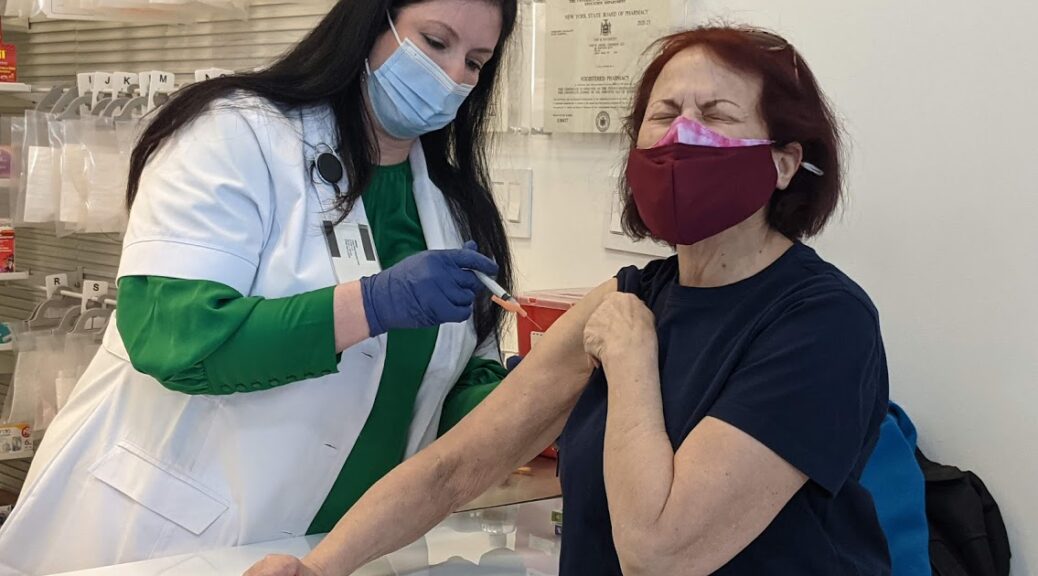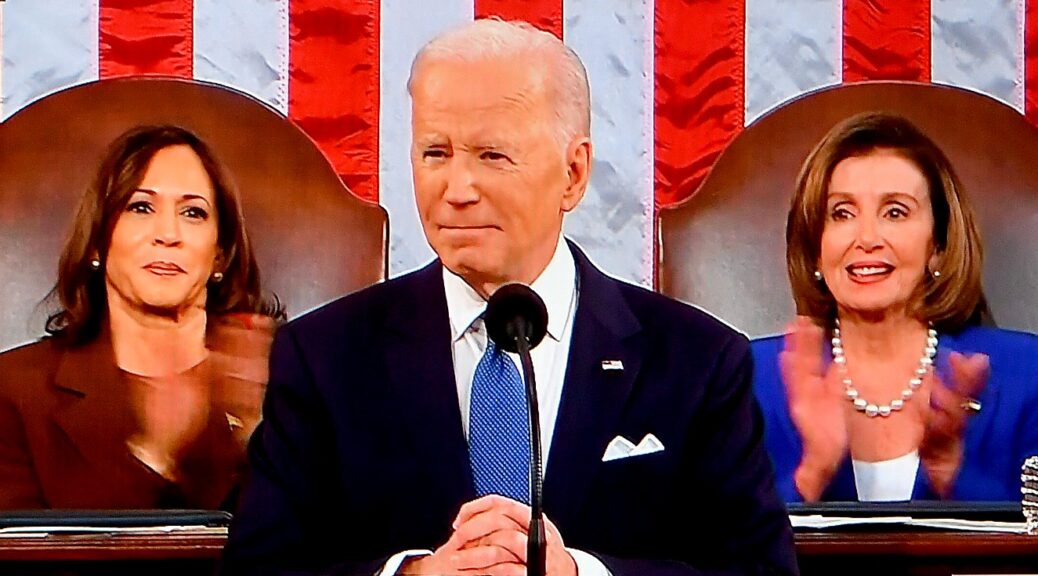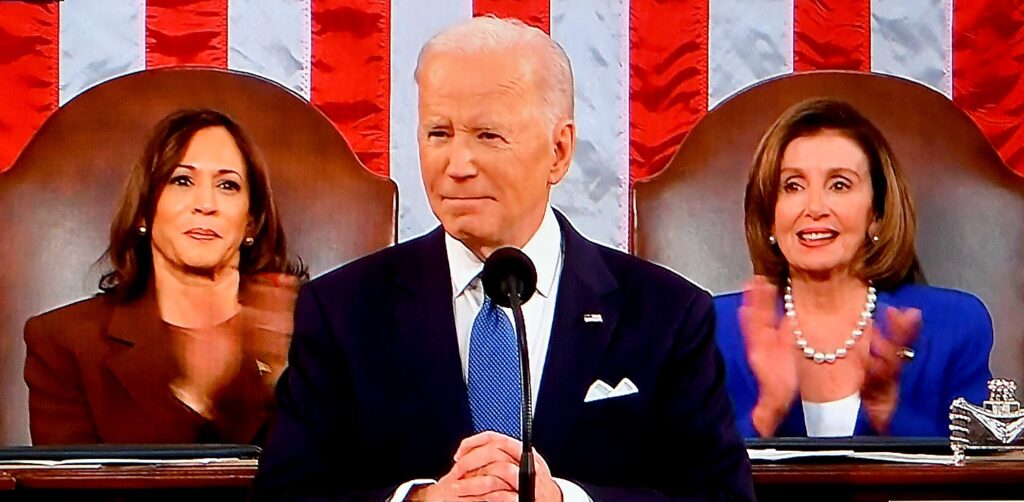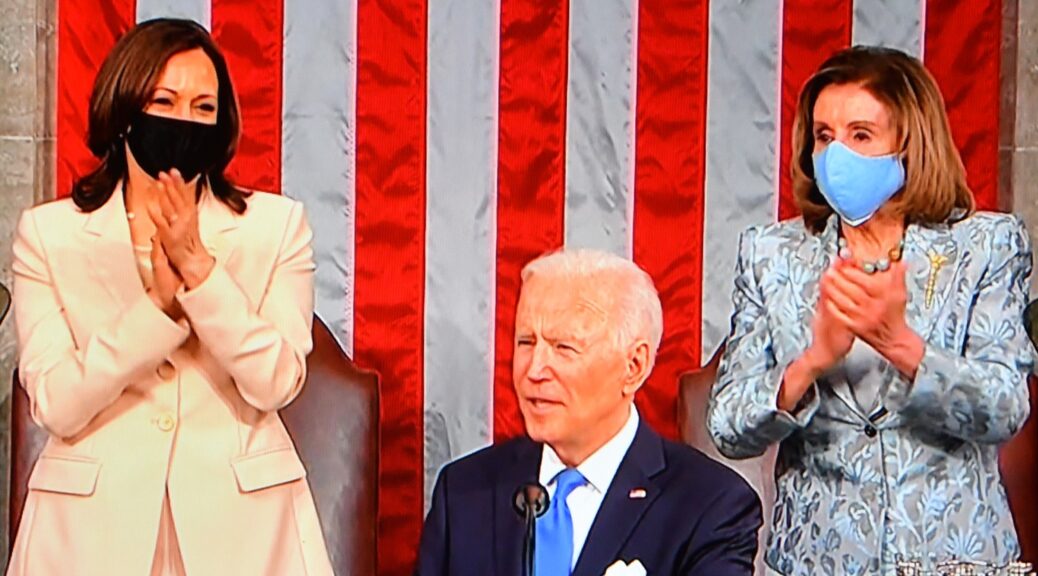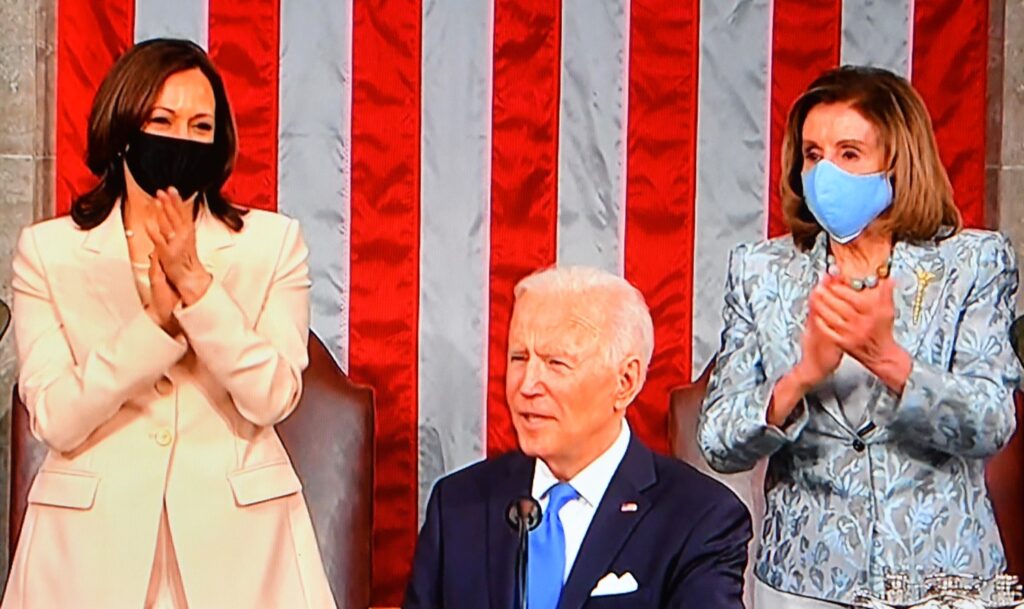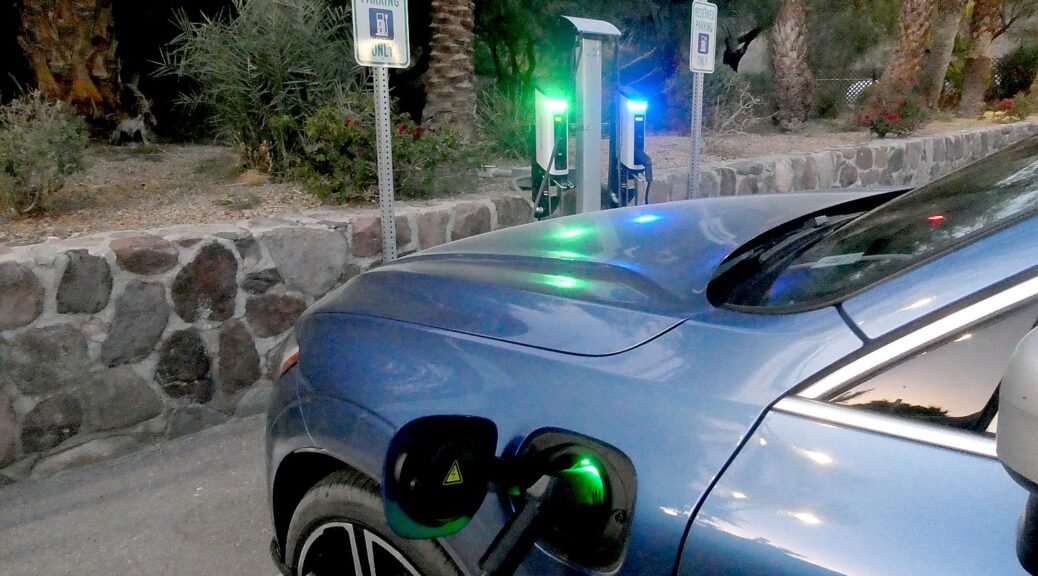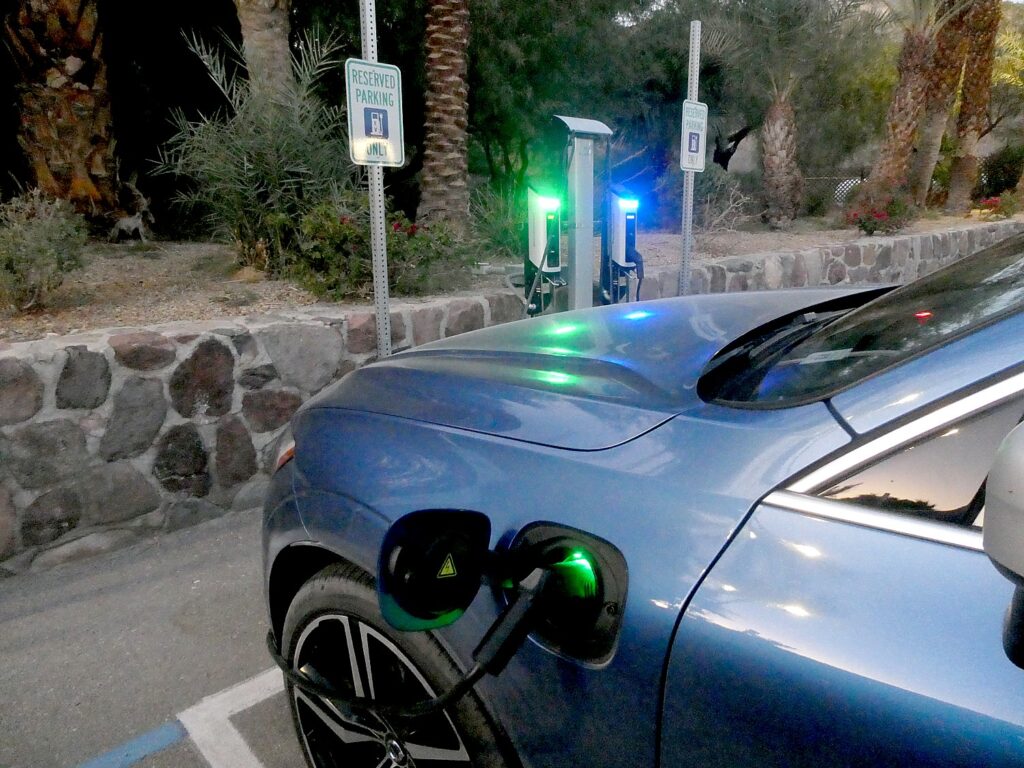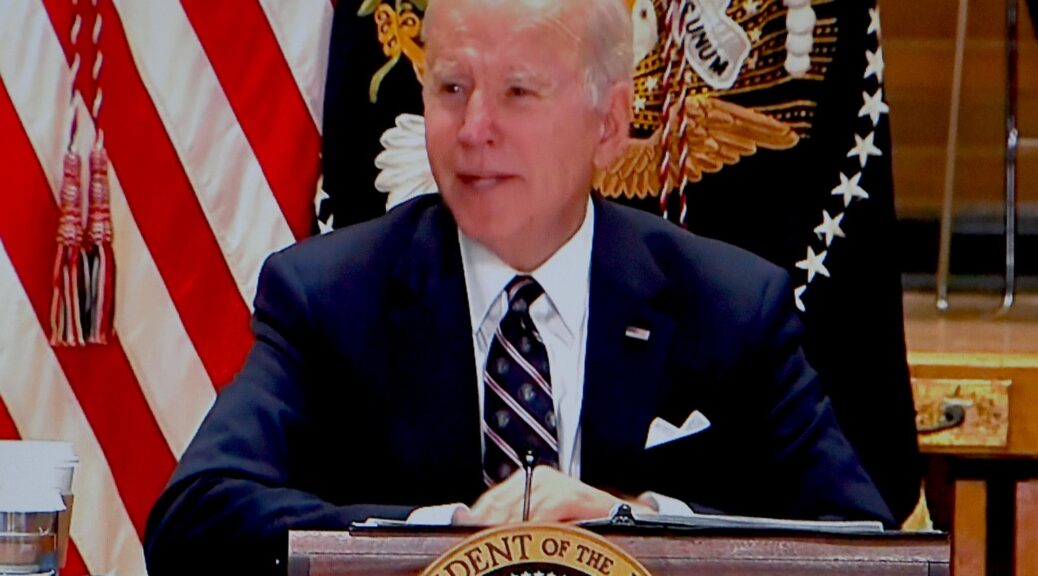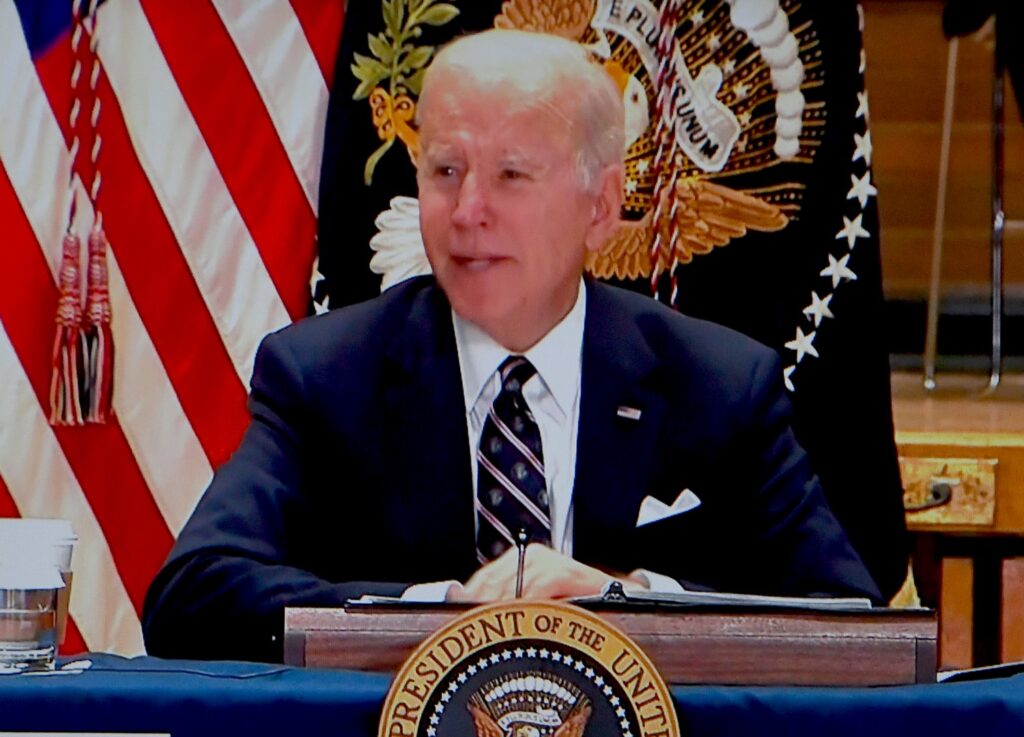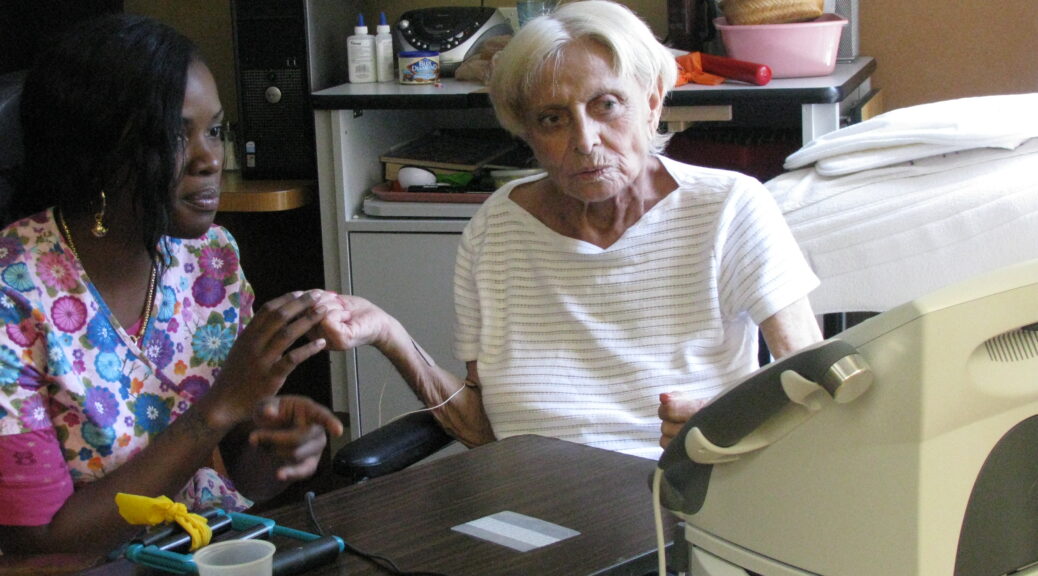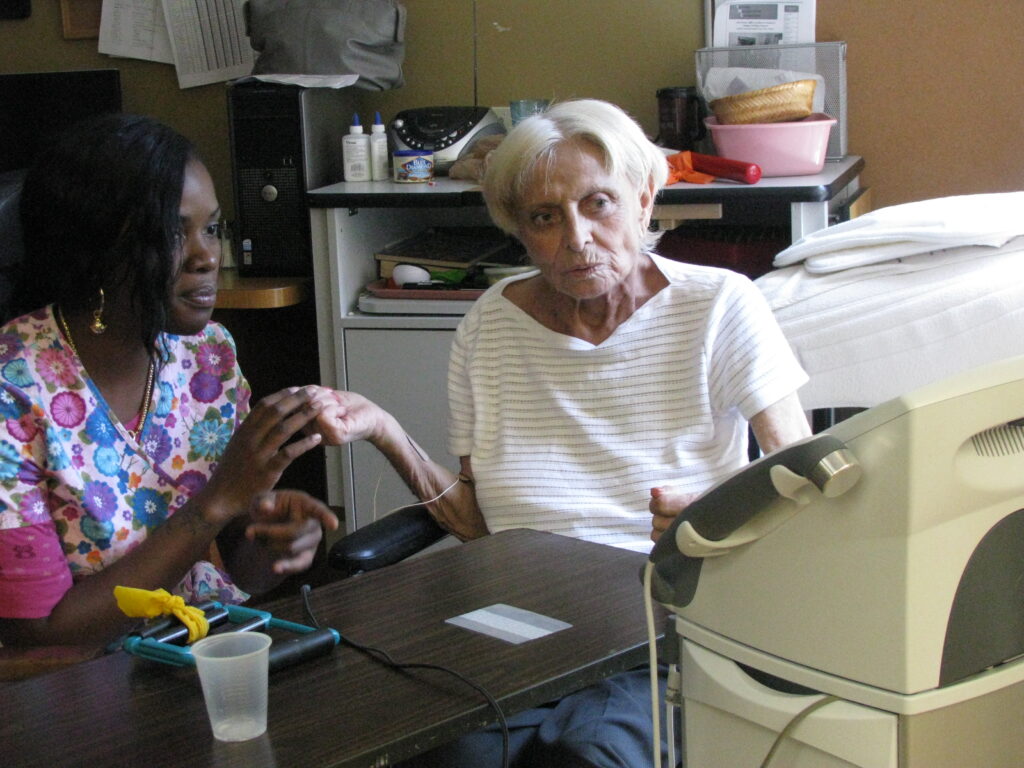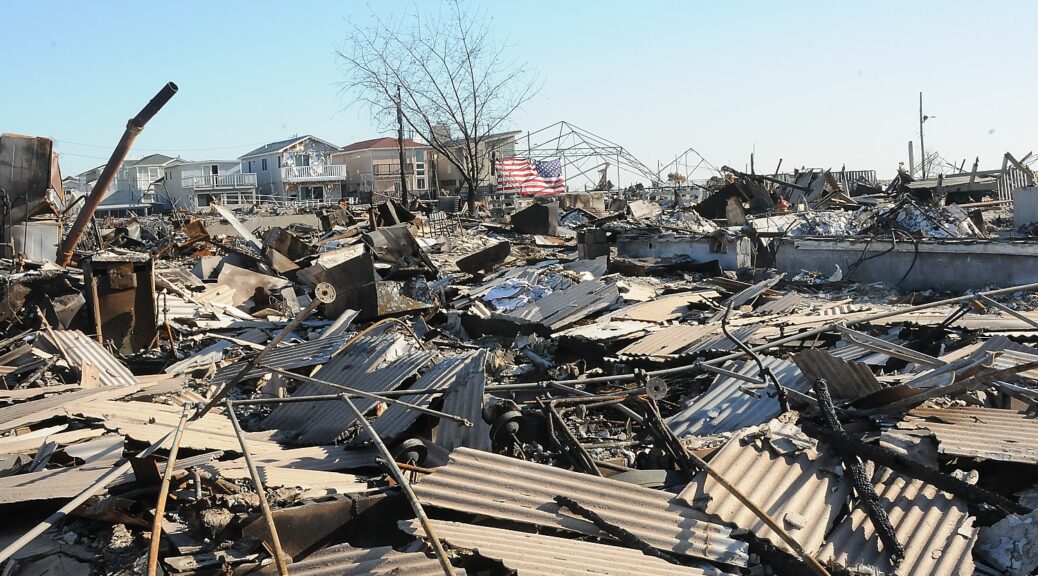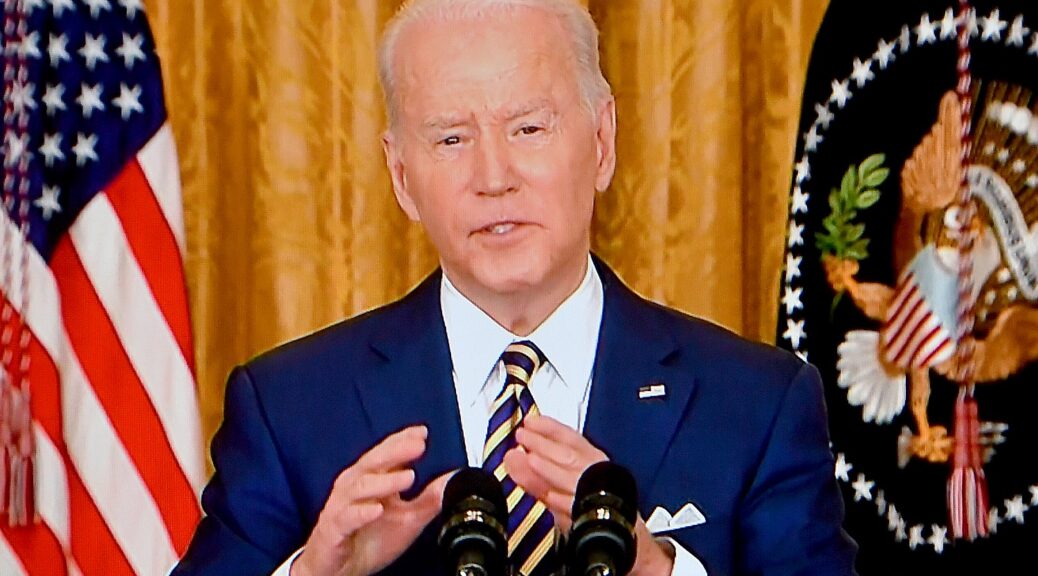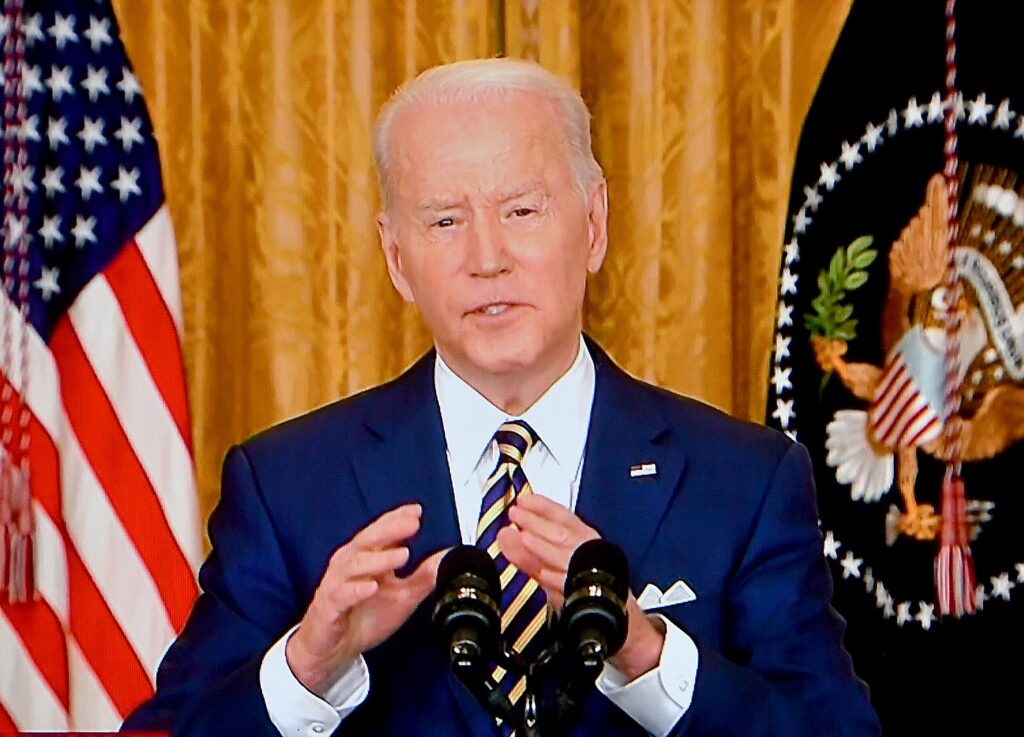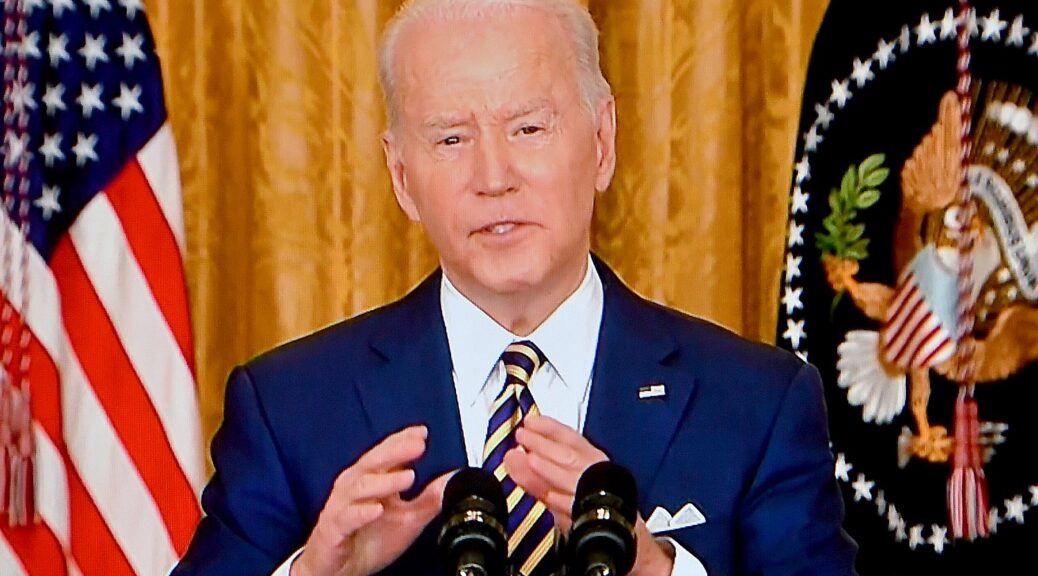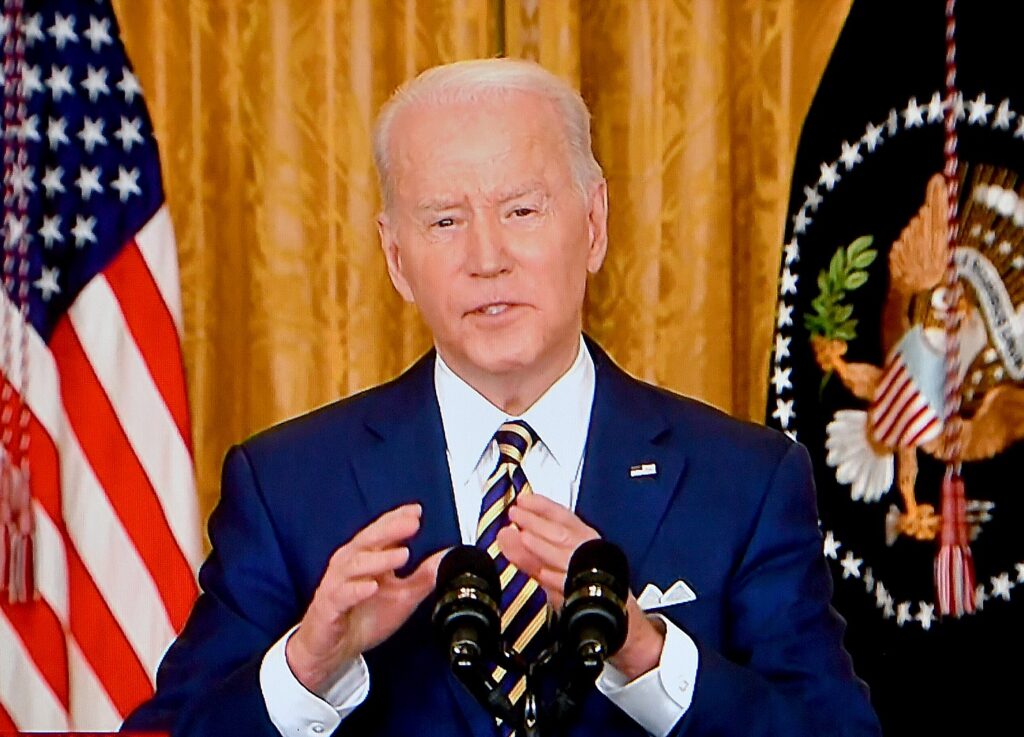ARP powered historic jobs recovery – with the largest calendar increase in jobs on record, unemployment down to 3.8%, and record drops in Hispanic Unemployment and Youth Unemployment – and ensured less scarring than any recovery in memory.
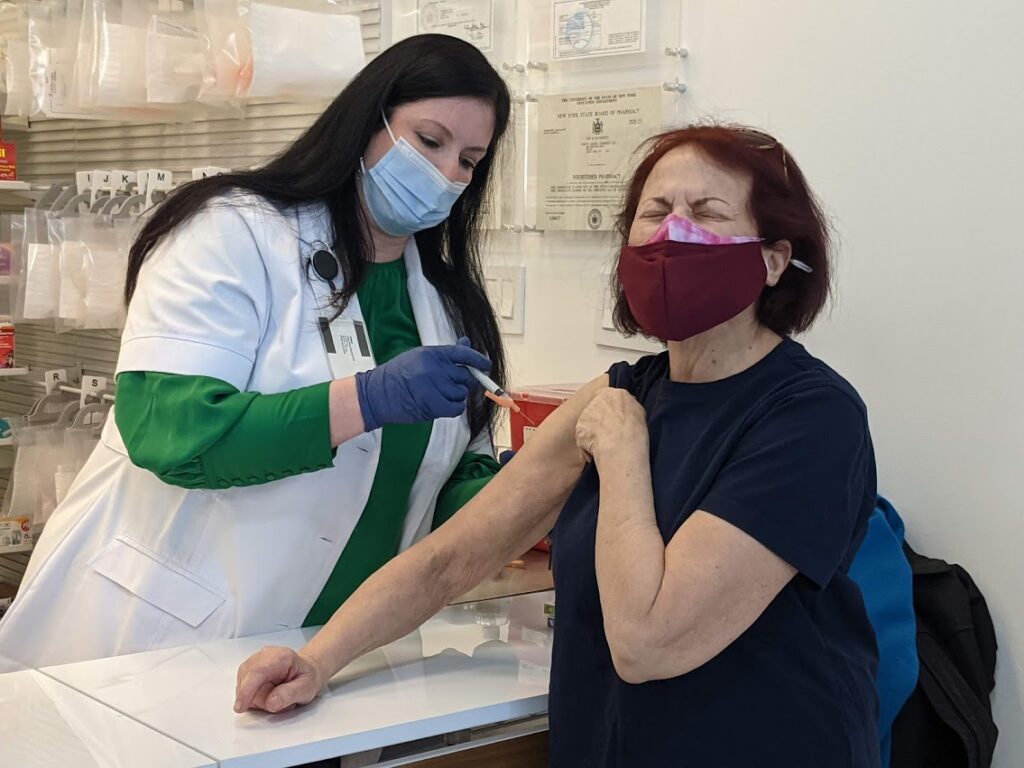
With the focus on Ukraine’s desperate fight against Russia’s criminal war and President Joe Biden’s role in marshaling the free world in its defense, little attention is being paid to the Biden Administration’s domestic actions that are having real achievements. On the one-year anniversary of the American Rescue Plan, the White House highlighted the difference the ARP is making in ordinary people’s lives; – Karen Rubin/news-photos-features.com
Lowering Health Care Costs and Increasing Health Coverage
- 14.5 million Americans – the most ever – signed up for ACA marketplace plans due to, on average, 50% lower costs in premiums for returning consumers.
- Nationwide, existing consumers with a new or updated plan selection after ARP saved an average of $67 (or 50%) per consumer per month on premiums, totaling $537 million per month in savings. In twenty states and the District of Columbia, existing consumers saved over $75 per month, on average, due to the ARP.
- Nationwide, existing consumers with a new or updated plan selection after ARP saved an average of $67 (or 50%) per consumer per month on premiums, totaling $537 million per month in savings. In twenty states and the District of Columbia, existing consumers saved over $75 per month, on average, due to the ARP.
- 5.8 million more Americans have health insurance today than a year ago. Between 2016 and 2019, 3.6 million Americans lost coverage.
- A family of four is saving an average of $2,400 on their annual premiums. Four out of five consumers could find quality coverage for under $10 a month.
Investing in Mental Health:
- $3 billion invested in expanding access to mental health and substance use services at the state level – largest one-time investment in history for mental health and substance use programs.
- Billions more in American Rescue Plan funding are being used to address mental health challenges affecting our children, including through hiring school social workers and counselors. With the help of American Rescue Plan K-12 funding, schools have already seen a 65% increase in social workers, and a 17% increase in counselors.
Fighting COVID
- Distributed 200 million vaccines, and millions of therapeutics using ARP dollars.
- 375 million at-home tests per month now available; before ARP, no at-home tests.
- $14.5 billion to address COVID for America’s veterans, including support for 37,000 homeless veterans.
Getting Kids Back in School
- Today, 99% of schools are open. Before ARP, only 46% of schools were open in-person.
- Major Investments in Keeping Schools Open, Combatting Learning Loss & Addressing Mental Health Challenges: Independent experts estimate based on school district plans that 59% of school districts are using ARP funds to hire/retain teachers and counselors, 35% are using ARP funds to hire/retain psychologists and mental health staff, and 52% are using ARP funds for HVAC and ventilation.
- A survey from the School Superintendents Association indicated 82% of superintendents plan to use funds to expand social, emotional, mental and physical health and development.
Supporting Working Families
- Expanded Child Tax Credit for Working Families – Helping Deliver Record Lows in Child Poverty.
- The 2021 CTC will reach a record nearly 40 million families with 65 million children.
- Expanded $3,000 credit for kids age 6-17 and $3,600 for kids under 6
- Experts estimate that the Child Tax Credit was the main driver in the American Rescue Plan bringing child poverty to record lows in 2021– including record low Black and Hispanic child poverty.
- Economic Impact Payments for Vast Majority of Americans
- Over 170 million Economic Impact Payments to 85% of all Americans – including an additional 19+ million payments to Social Security beneficiaries, 3 million payments to SSI beneficiaries, and 320,000 payments to Veterans who would not have received these benefits under normal tax filing requirements.
- Over 170 million Economic Impact Payments to 85% of all Americans – including an additional 19+ million payments to Social Security beneficiaries, 3 million payments to SSI beneficiaries, and 320,000 payments to Veterans who would not have received these benefits under normal tax filing requirements.
- Ensured Kids didn’t go hungry in the summer
- Estimated 30 million kids fed with first nationwide Summer supplemental nutrition program – more than 10x higher than 2019 summer meals for kids.
- Estimated 30 million kids fed with first nationwide Summer supplemental nutrition program – more than 10x higher than 2019 summer meals for kids.
- Unprecedented Emergency Rental Relief and Eviction Prevention
- Over 4 million Emergency Rental Assistance payments to tenants in a single year – by orders of magnitude the largest eviction prevention effort in history.
- Eviction filings at just 60% of historic averages in 5 months after CDC moratorium – even though some had projected an eviction tsunami.
- More than doubled the amount of LIHEAP – the most ever going to help with Heating and Cooling Costs of well over 5 million households
Helping People Get Back to Work
- Most One-Time Support for Childcare Providers Ever to Keep Them Open and Operating
- 150,000+ providers supported by childcare stabilization payments so far, the most support for childcare providers ever.
- More than 5 million children served by these providers.
- Expanded Earned Income Tax Credit for Workers
- Tripled EITC for 17 million workers without dependent children from $540 to $1500 – first increase since 1993 – and extended the credit to younger & older workers.
- Helping millions of front-line workers: This expansion will help nearly 1.8 million cashiers and retail salespeople; almost 1 million cooks and food prep workers; and more than 850,000 nurses and health aides, 500,000 janitors, 400,000 truck and delivery drivers, and 300,000 childcare workers.
- Getting Americans Back to Work with State and Local Investments
- Over half of states and scores of cities across the country have invested in workforce development, apprenticeships, training, and premium pay for essential workers – with premium pay to nearly 750,000 essential workers.
- State and local governments added 467,000 jobs in 2021 – best year since 2001.
Staying True to Our Veterans:
- ARP provided resources for veterans currently receiving housing support, including an estimated 37,000 homeless veterans.
- ARP cancelled health care copayment charges for 2.5 million veterans during the pandemic – worth $1 billion.
- ARP Child Tax Credit expansion meant that roughly 5 million children in veteran and Active Duty families are receiving the credit for 2021, per CBPP estimates.
- ARP invested in 16,000 veterans’ health care with ARP funds for 158 State Veterans Homes operations and for State Veterans Home renovations and capital projects.
- ARP funding is enabling the Veterans Benefits Administration to reduce the claims backlog from 212,000 in March 2021 to 100,000 by September 2022.
Rescuing and Transforming Our Communities:
- Dozens of cities and 21 states have already committed ARP Fiscal Recovery Funds to public safety, including critical investments in gun crime prevention – hiring and retaining police officers for community policing and investing in critical technology to take on increases in gun and other violent crimes, and supporting evidence-based community violence interventions and summer youth employment.
- State and local, Education and HUD investments in affordable housing and fighting homelessness:
- ARP Department of Education program to provide services and enable full attendance for students experiencing homelessness will reach 1.5 million children.
- ARP added about 70,000 emergency vouchers to the rental market through HUD.
- ARP funded new housing counseling program which is expected to provide 80,000 housing counseling sessions.
- Roughly half of cities and states are investing some portion of their State and Local Funds in housing assistance and investments – from New Jersey’s $750 million eviction prevention and utilities program to Austin and Travis County’s $200 million ARP investment in a comprehensive plan to take on its homelessness crisis.
- Broadband Investments underway across the country: 20 states have already invested Fiscal Recovery Funds to expand broadband access – in addition to $10 billion Capital Projects Fund which they can use to help ensure that all communities have access to high quality modern infrastructure needed to access critical services, including broadband.
- Even with more on the way, states and territories have already announced about $9 billion in ARP investments to expand high speed internet access.
- Even with more on the way, states and territories have already announced about $9 billion in ARP investments to expand high speed internet access.
- Long-needed investments in clean water: with 21 states already committing Fiscal Recovery Funds to improve water and sewer infrastructure, including removing lead pipes.
- Even with more on the way, states and territories have already announced investing $7.5 billion in ARP funds for water and sewer improvements.
Providing Permanent Tax Relief for Puerto Rico Families
- Made hundreds of thousands of families in Puerto Rico eligible for CTC for first time – previously ~90% of families excluded from CTC.
- First-ever Federal Support for Puerto Rico’s EITC, more than tripling workers’ benefits.
Most support ever for Tribal Communities
- $32 billion to Tribal communities and Native people, the largest in assistance to tribal governments in history.
FACT SHEET:
How The American Rescue Plan Is Keeping America’s Schools Open Safely, Combating Learning Loss, And Addressing Student Mental Health
On March 11, 2021 – one year ago – President Biden signed the American Rescue Plan (ARP) Act into law, an unprecedented $1.9 trillion package of emergency assistance measures. The ARP provides a historic investment in America’s preschool through twelfth grade (P-12) schools in response to the COVID-19 pandemic to keep schools safely open, tackle learning loss and mental health. These funds include $122 billion for P-12 schools in Elementary and Secondary School Emergency Relief (ARP ESSER) funds. ARP also dedicated an additional $8 billion to states and school districts to meet the needs of certain student populations, including over $3 billion for students with disabilities and $800 million for children and youth experiencing homelessness.
ARP has already had a significant impact on schools across the country: over the last year, states, school districts, and schools have used these funds to safely reopen and sustain in-person instruction, combat learning loss, and address students’ mental health needs.
In his State of the Union address last week, President Biden called on schools to hire more teachers, urged the American people to sign up to be tutors and mentors, and – as part of his unity agenda – encouraged the country to come together to address child mental health. ARP ESSER funds are supporting this agenda in several ways:
- Schools have gone from 46% open before ARP to 99% safe and open today: Before ARP was signed into law, just 46 percent of America’s P-12 schools were open for full-time, in-person learning. Today, over 99 percent of P-12 schools are open for full-time, in-person instruction.
- ARP led to record growth in local education jobs that are critical to meeting students’ academic and mental health needs: Although there is more work to do to address longstanding educator shortages and return to pre-pandemic levels, ARP has led to record jobs growth in the education sector. With the help of ARP ESSER funding, local governments added more than 279,000 education jobs in 2021 – the best calendar year of jobs growth since records began in 1956 – and added an additional nearly 46,000 jobs in the first two months of 2022. Schools have already seen a 65% increase in social workers and a 17% increase in counselors relative to before the pandemic.
- Analysis of school district plans shows overwhelming majority of funds are being used for priorities like teachers, counselors, academic recovery, mental health, and health and safety measures like ventilation improvements: FutureEd – an education think tank at Georgetown University’s McCourt School of Public Policy – analyzed data on a representative sample of over 3,000 school districts’ plans covering 55% of ARP ESSER funds. This analysis showed:
- Nearly 60% of funds are being used to:
- invest in staffing – both retaining current staff and expanding professional development opportunities, as well as recruiting, hiring and training of new teachers, school staff and mental health professionals to increase school capacity and meet the academic and mental health needs of students;
- combat learning loss through student support programs such as evidence-based tutoring, expanded after-school and summer learning and enrichment programs, and the purchase of millions of new textbooks and learning materials; and
- supporting the physical and mental health of students and educators.
- Another 24% is being invested in keeping schools operating safely, including providing PPE and updating school facilities to support health and safety. This includes investments in lead abatement and an estimated nearly $10 billion for improvements to HVAC and ventilation.
- Nearly 60% of funds are being used to:
- ARP has fueled investments in education spending and accelerated the rate of spending of education relief funds by five to six times: Before the passage of ARP, states and school districts were spending a total of a little more than $500 million per month of federal emergency relief funds for education. Since the passage of the ARP and the assurance to states and school districts that critical funds were on their way, the monthly rate of spending of ESSER funds from ARP and earlier relief legislation has accelerated to more than $3 billion per month – an increase of five to six times.
- All 50 states submitted clear spending plans that have been approved by the U.S. Department of Education: On March 24, less than two weeks after ARP was signed, two-thirds of funds – $81 billion – were released. To ensure funds would be used effectively, states had to submit and receive approval on their spending plan to receive their final third of funds. As of December 2021, every state, plus DC and Puerto Rico, submitted a plan, the U.S. Department of Education has approved all plans, and all $122 billion in ARP ESSER funds have been made available to states.
- Survey of 600 school superintendents shows school leaders are meeting the challenge of the President’s unity agenda by using funds for students’ mental health and other developmental needs: The COVID-19 pandemic has subjected many young Americans to social isolation, loss of routines, and traumatic grief – increasing the need for mental health supports. A recent survey by AASA, The School Superintendents Association, found that 82% of districts plan to use funds to address this need by expanding supports for social, emotional, mental, and physical health and development.
- States and school districts have deployed funds strategically while engaging meaningfully with their communities – including parents: In developing their spending plans, states and school districts were required to engage members of the community, including parents, educators, students, representatives of students with disabilities and others. The U.S. Department of Education continues to encourage states and school districts to consult with these critical partners on how to ensure these funds have the most impact in classrooms.
ARP ESSER-Funded State and District Activities
From the U.S. Department of Education
Safely Reopening Schools and Sustaining Safe Operations
Safely reopening schools and keeping them open safely are essential for student learning and well-being.
- Houston Independent School District (HISD) in Texas has allocated ARP ESSER funds to campuses for COVID-19 mitigation efforts. HISD has provided COVID-19 testing at 90 percent of its campuses and has hosted nearly 100 vaccine clinics.
- The DeKalb County School District in Georgia upgraded air filters from MERV 8 to MERV 13 in every school facility that could accommodate that size filter and took steps to improve ventilation in all other schools using ARP ESSER funding.
- White Plains City School District in New York will use a combination of local and federal funds to replace the HVAC units across their district to provide a safer learning environment for students and staff. Upon completion, the total project will cost $26.3 million, with nearly one-third of the funding coming from relief funds, including ARP ESSER.
Combating Learning Loss
States and school districts have the resources they need, and are required to address the impacts of the pandemic on students’ learning. States and districts nationwide are using funds to hire teachers and other instructional staff, launch tutoring, summer and afterschool programs (which states are required to fund), and make long-overdue investments in instructional materials. States are specifically required to address the needs of students disproportionately impacted by the pandemic, including students with disabilities, English learners, and students experiencing homelessness.
Recruiting, Retaining, and Expanding Professional Development of Staff:
- Maine School Administrative District 11 is addressing gaps in learning opportunities by using ARP ESSER funds to hire nine new teachers and implement a new math, language arts, and social studies program. The additional teachers permitted the district to reduce class sizes from 22-24 students to an average of 14-16 students. The district has provided external and internal coaching, ongoing professional learning, and additional support to educators and staff.
- Gaston County Schools in North Carolina is adding an additional teacher and a temporary employee per school to decrease class sizes, help manage workloads and provide classroom coverage in each of its 54 schools using ARP ESSER funding. This supports and helps retain current teachers, who are less likely to have to give up planning time to cover another classroom, or combine classrooms, and also benefits students whose learning is less likely to be disrupted by the absence of another teacher.
- The Asheville City Schools Board of Education in North Carolina is using ARP ESSER funds for a bonus of $3,000 to $3,500 over the course of the year for full-time teachers and faculty in order to increase staff retention.
- Providence Public School District in Rhode Island is launching new incentives to recruit and retain highly-qualified educators, including early signing bonuses for newly-hired educators and support staff in hard-to-fill positions using ARP ESSER funding.
Summer Learning and Enrichment:
- In New Mexico, the College and Career Readiness Bureau of the New Mexico Public Education Department launched the Summer Enrichment Internship Program in 2021 using ARP ESSER funding. The program covers the cost of summer internships for New Mexico high school students and provides high school students, particularly those most impacted by the pandemic, with the opportunity to participate in high-quality internships in government agencies, including county, tribal, and municipal placements. Over 300 community partners and 1,200 student interns participated across 26 counties. Summer jobs programs like these that engage students are also important community violence intervention strategies. This program will continue in the summer of 2022 as well.
- Cleveland Metropolitan School District in Ohio used ARP ESSER funds to increase summer learning participation seven-fold. In 2021, 8,400 students participated in summer school, compared to 1,000-1,200 students in previous years. Focused on “Finish, Enrich, and Engage,” the expanded summer school offered 12 weeks of programming that allowed for credit accumulation and unfinished learning. Students engaged in problem-based learning units in the morning with engagement activities like clubs and sports in the afternoon. This inclusive programming, which included students with disabilities and multilingual learners, will continue in summer 2022.
- The Oklahoma State Department of Education is using ARP ESSER funds to implement evidence-based summer learning and enrichment programs and to expand afterschool programming through partnerships with community organizations. They provide for social, emotional, and academic support and access to technology. This initial investment of $6 million provided services through 28 organizations, at 140 sites, serving an average 11,000 students a month through the summer of 2021.
Tutoring:
- The Arkansas Division of Elementary and Secondary Education has established the Arkansas Tutoring Corps using ARP ESSER funding. The Arkansas Tutoring Corps program includes recruitment, preparation, and support for candidates to become qualified tutors to provide instruction or intervention to meet the academic needs of students most impacted by lost instructional time. A system connects prepared candidates with organizations seeking to support students’ academic needs. The program is already enhancing learning experiences of students due to loss of instructional time and addressing gaps in foundational skills in mathematics and literacy.
Meeting Students’ Social, Emotional, and Mental Health Needs
Districts and states must use a portion of ARP ESSER funds for evidence-based interventions that respond to students’ social, and emotional needs – such as the ability to collaborate with others or persist through difficult challenges – and to support students’ mental health. Districts must specifically address the impact of the pandemic on groups of students that were disproportionately impacted.
Hiring Counselors and Increasing Supports:
- The Kansas Department of Education has developed a Grow Your Own Counselor model with ARP ESSER funding that encourages districts to identify candidates and employ them as student services coordinators while they develop their skills in an approved school counseling graduate program.
- The Nevada Department of Education has allocated $7.5 million to support districts in hiring 100 additional school based mental health professionals. Using ARP ESSER funding, the state is spending $1.7 million to hire a Multi-Tiered Systems of Support coach for every district.
- Plymouth-Canton Community Schools in Michigan hired three full-time high school counseling staff to decrease counselor caseloads with ARP ESSER funding. Counselors are now able to dedicate more time to individual student meetings, attend meetings with assistant principals and deans to review academic progress and other needs of students, and develop a wellness center at each campus.
Community Schools:
- The New York City Department of Education announced an investment of $10 million to expand the district’s research-based community schools initiative from 266 to 406 sites citywide using ARP ESSER funding. These schools provide integrated student support services to students and the surrounding community, such as mental health care, adult education courses, community violence intervention programs, and nutrition support.
Strengthening the Educator Workforce
The pandemic has taken a toll on the nation’s educators as well as its students. States and districts should support and stabilize the educator workforce and make staffing decisions that will help address students’ social, emotional, mental health, and academic needs.
- The Tennessee Department of Education has created a “Grow Your Own” grant with federal funding, including ARP ESSER, that is designed to foster partnerships between educator preparation programs (EPPs) and districts to provide promising and innovative, no-cost pathways to the teaching profession by increasing EPP enrollment and growing the supply of qualified teachers. The program is currently comprised of 65 partnerships between 14 EPPs and 63 districts across the state – enabling over 650 future educators to become a Tennessee teacher for free. $6.5 million has been allocated to this program thus far. Tennessee also pioneered a pathway with the U.S. Department of Labor by establishing the nation’s first registered apprenticeship program for teachers, which will help sustain the state’s Grow Your Own programs and partnerships leveraging federal apprenticeship funding.

